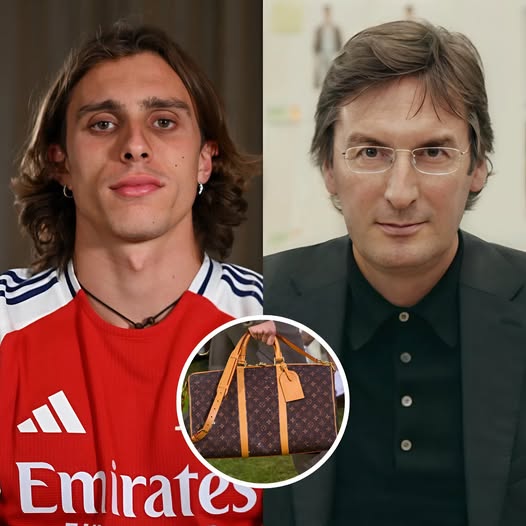After receiving a public apology from Louis Vuitton CEO, Riccardo Calafiori was gifted a $57,000 luxury handbag – one of the most expensive bags in the world – as a gesture of reparation for the brand’s mistake. At first, it seemed like a celebratory gesture. But then Riccardo Calafiori made a decision that sh0cked the international media… – trann
After receiving a public apology from Louis Vuitton CEO, Riccardo Calafiori was gifted a $57,000 luxury handbag—one of the most expensive bags in the world—as a gesture of reparation for the brand’s mistake. At first, this act appeared to be a celebratory gesture designed to mend fences and honor Calafiori. However, the unfolding events that followed took a surprising turn that shocked international media.
Riccardo Calafiori, a rising star in the football world known for his expressive style both on and off the pitch, gained widespread attention beyond his athletic prowess due to this incident. The gift came as a public acknowledgment of a previous error by Louis Vuitton, aiming to repair the brand’s image and demonstrate goodwill. The handbag itself, valued at $57,000, is among the premier luxury items produced by Louis Vuitton, symbolizing exclusivity, impeccable craftsmanship, and high fashion prestige.

Initially, the public and media treated the gift as a symbolic celebration of Calafiori’s accomplishments and a gesture reflecting the brand’s commitment to personalizing relationships with influential figures. It showed Louis Vuitton’s strategic approach to celebrity partnerships and damage control by placing high-value, personalized gifts in the hands of a prominent sports personality who also has a strong connection to fashion.
Nonetheless, what followed was unexpected. Riccardo Calafiori made a decision that turned the narrative from a simple act of gratitude to a bold statement. Rather than embracing the bag as a mere luxury accessory, Calafiori chose a path that resonated deeply with his personal values and the broader public consciousness. His decision sparked widespread international media coverage, not only because of the value of the gift but due to its symbolism and the message it conveyed.

Although the details of his decision are nuanced, it effectively challenged the traditional dynamics of luxury brand gifting. Calafiori’s response was seen as a reflection on consumerism, corporate accountability, and personal integrity, topics profoundly relevant in today’s social landscape. By reacting differently than expected, he used the moment to highlight issues surrounding luxury marketing and the responsibilities of brand power in society.
This incident underlines Riccardo Calafiori’s multifaceted persona as a professional athlete and a cultural figure influencing fashion and social values. It also underscores Louis Vuitton’s awareness of the power of celebrity endorsements and the risks brands face when attempting to rectify public relations issues through material gifts.
In summary, the story of Riccardo Calafiori and the $57,000 Louis Vuitton handbag evolved from a high-profile brand apology and celebratory gift into a globally discussed event that questioned luxury culture and personal principles. It was a moment where sport, fashion, and social commentary intersected, creating a narrative that transcended ordinary celebrity-brand relationships and left an indelible mark on the international media landscape.

